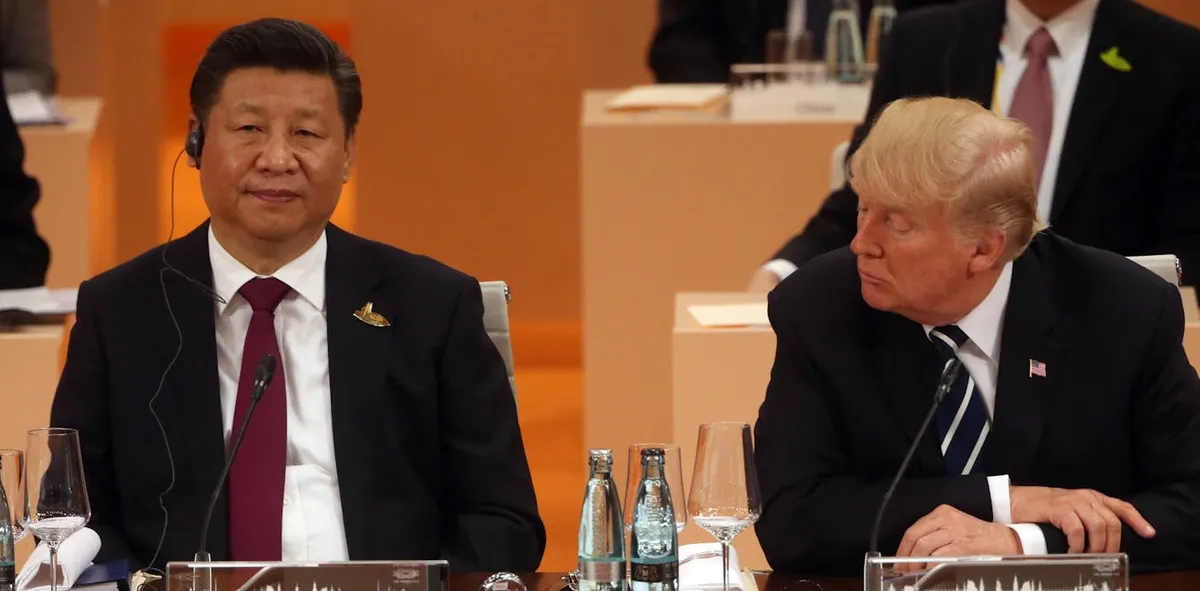
On June 5, 2025, U.S. President Donald Trump engaged in a significant phone call with Chinese President Xi Jinping. This conversation marked the first direct interaction between the two leaders since Trump began his second term and occurred during a period of heightened tension stemming from the ongoing U.S.-China trade war. Following the call, Trump eagerly framed the discussion as a success for his administration, claiming on social media that it resulted in “a very positive conclusion for both countries.” He later informed reporters that Xi had agreed to resume exports of rare earth minerals and magnets to the U.S., which alleviated concerns within the auto industry that had previously warned of severe risks to production due to supply chain disruptions.
The presidential phone call also resulted in an invitation for Trump and First Lady Melania Trump to visit China, an invitation that Trump reciprocated. However, beyond the superficial easing of trade tensions and diplomatic pleasantries, the call revealed subtle dynamics that suggest an imbalance in the ongoing bilateral dispute. As an expert on U.S.-China relations, I observe that these nuances indicate Xi may have the upper hand in negotiations, using Trump as a counterpoint to enhance his image as a strong leader both domestically and internationally.
While the Trump-Xi call should not distract from the precarious state of China-U.S. relations, it does highlight Beijing’s strategic use of its “rare earth materials card.” Following the imposition of tariffs by the U.S. on Chinese goods, Beijing suspended rare earth shipments to major American companies. Although a 90-day tariff truce was reached in Geneva on May 12, 2025, negotiations between the two nations remain ongoing. Observers have pointed out that deep-rooted structural differences—such as issues regarding currency manipulation, export subsidies, and other non-tariff barriers—continue to overshadow the prospects of fruitful U.S.-China trade talks.
According to the terms of the Geneva agreement, China was expected to lift its export ban on rare earths, a commitment the U.S. accuses China of failing to fulfill. Conversely, Beijing claims that the U.S. was the first to breach the agreement, citing the introduction of discriminatory measures against China, including new export controls on artificial intelligence chips and restrictions on selling electronic design automation software to Chinese companies. Notably, Trump’s order prohibiting American companies from using AI chips from China-based Huawei—issued just a day after the Geneva agreement—was perceived in Beijing as a direct contradiction to the spirit of the negotiations, potentially prompting delays in the resumption of rare earth exports.
Just one day prior to the June 5 call, Trump expressed on social media his admiration for President Xi, stating: “I like President XI of China, always have, and always will, but he is VERY TOUGH, AND EXTREMELY HARD TO MAKE A DEAL WITH!!!” This conversation likely reinforced Xi’s tough image, not only to a domestic audience but also to international observers. China’s official statement regarding the call subtly indicated that it was Trump who initiated the conversation, further promoting the idea that Xi holds a dominant position in negotiations.
The Chinese statement also pointed out that the Geneva talks were “at the suggestion of the U.S. side,” implying that China did not yield under Trump’s trade pressure. This framing signals to the international community that it is the U.S.—not China—that failed to uphold its side of the Geneva agreement. Throughout the escalating trade war, Washington believed it could establish “escalation dominance” through tariffs, perhaps underestimating China’s capacity to retaliate effectively.
Despite the apparent easing of tensions from the Trump-Xi call, significant challenges remain in the U.S.-China relationship. Reports indicate that, following the call, China issued temporary export licenses to American companies supplying rare earth materials to the nation’s three largest automakers. This response may have alleviated some U.S. concerns regarding supply chains, while simultaneously reducing Chinese anxieties over issues such as Taiwan and visa restrictions for students.
Nevertheless, the deep and fundamental differences that exist between the two countries on trade and economic issues suggest that future negotiations may encounter similar roadblocks as those seen during Trump’s first term. Importantly, Beijing now appears more adept at leveraging its rare earth exports as a bargaining chip, posing greater pressure on Trump as he navigates talks with Xi. Should negotiations falter, the resulting supply chain disruptions could lead to inflation, market volatility, and economic distress for the U.S.—a scenario with significant political ramifications ahead of the midterm elections.
In conclusion, the dynamics of the Trump-Xi call underscore Xi’s potential advantage in the relationship, with rare earth materials serving as a critical leverage point. Trump may find himself needing to re-engage with Xi in the future to revive stalled trade discussions, a move that could further reinforce Xi’s image as the more dominant figure in this complex geopolitical landscape.